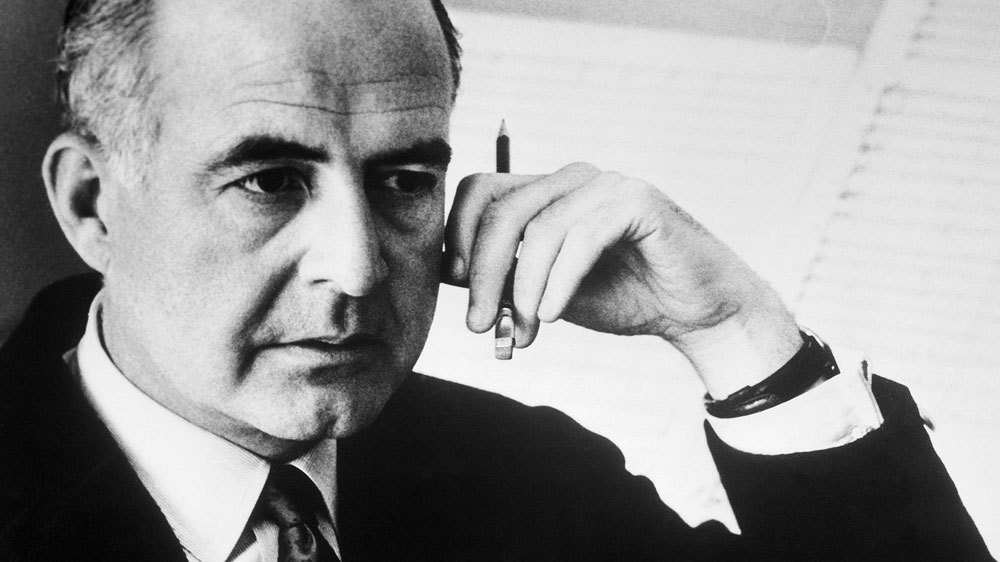Samuel Barber’s Adagio for Strings, Op. 11 is one of those pieces that remind us of the eternal and mysterious communicative power of music. When we listen to Barber’s Adagio, we all know, intuitively, what the music is saying, even if we can’t put its message into words. For many listeners, the Adagio is filled with mournful lament. Collectively, we have turned to this music in times of national tragedy, from September 11 to the presidential memorials of Franklin D. Roosevelt and John F. Kennedy. Adagio for Strings has become a cultural icon, forming the solemn backdrop of Oliver Stone’s 1986 Platoon, among other films, and even inspiring a pop remix by the Dutch DJ and record producer DJ Tiësto. Thomas Larson, author of the 2010 book, The Saddest Music Ever Written, The Story of Samuel Barber’s Adagio for Strings, went so far as to call it “American’s secular hymn for grieving the dead.”
But Barber’s Adagio goes beyond any one emotion. From the quiet intensity of its opening bars, to its restless, searching inner voices and shifting meters, Adagio for Strings is filled with inner tension. Its gradual, expansive crescendo is both terrifying and sensuous. Growing out of the raw, primal sound of open fifths, it pulls between the alternate worlds of B-flat minor and F major, remaining harmonically ambiguous. The final chord, a tense whisper in F, ultimately feels unresolved, but seems to offer a glimpse of a reality which exists beyond the confines of the piece. Then there’s the role that silence plays in Adagio for Strings. It’s silence that follows the piece’s most climactic moment, bringing to mind this interesting Samuel Barber quote:
I have always believed that I need a circumference of silence. As to what happens when I compose, I really haven’t the faintest idea.
Adagio for Strings was born as the second movement of the String Quartet, Op. 11, written in 1936 when Barber was twenty-seven. Two years later, he created the string orchestra version, submitting it to Arturo Toscanini, who returned the score without comment. Annoyed, Barber assumed the great conductor had rejected the work. But Toscanini had been so excited by the music that he memorized it, immediately, and apparently never looked at it again until the day of the premiere.
Here are five of my favorite recordings of Samuel Barber’s Adagio for Strings. Please share your thoughts about the music in the comment thread, below.
Leonard Bernstein and the Los Angeles Philharmonic
There’s an incredible intensity to the sound Bernstein draws out in this 1982 live concert recording at San Francisco’s Davies Symphony Hall:
Leonard Slatkin and the Saint Louis Symphony
Leonard Slatkin’s 1989 interpretation is slightly more austere, bringing out the cosmic timelessness of the music:
Eugene Ormandy and the Philadelphia Orchestra
Eugene Ormandy and the Philadelphia Orchestra gave one of the earliest public performances in April, 1942. This recording features the uniquely dark, rich sonority of the Philadelphia string section during the Ormandy days:
Arturo Toscanini and the NBC Symphony
Here is Toscanini’s world premiere recording from May 11th, 1938:
The Dover Quartet
Let’s finish with the original string quartet version, performed by the Endellion String Quartet:
https://www.youtube.com/watch?v=7PAlVcjj68U


Please don’t forget to mention Barber’s vocal version Agnus Dei https://www.youtube.com/watch?v=mWgjwTc3PUw
Thank you for this great addition, Peter!
Lot of thanks Timothy for this fantastic live recording of the great Lenny, a such intensity in the big climax it’s incredible!… Since october 14th 1990 I remain musically orphan…
But Toscanini are you sure???
The Toscanini recording is historically significant, since it was the first. I agree that Bernstein’s has a unique intensity.
The Kronos quartet had a fantastic arrangement as well. My favorite rendition of the classic!
The Bernstein orchestral recording is certainly lush and dramatic, however, I don’t feel that it captures the soul of the music as performed by the early European string quartet. I find the old recording to be much more moving in its quiet elegance than the overblown orchestral versions. The old string quartet performance always brings me to tears, whereas the various orchestral versions simply impress with flood of sound.
Lenny’s recording is beautiful, never knew that Toscanini was capable of recording the Adagio. I can only tell you that my eyes are full of tears whenever I listen to this piece of music. Albinoni must be very jealous of Barber.